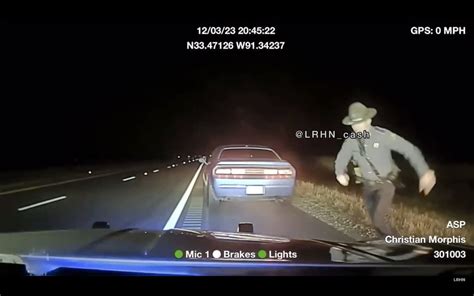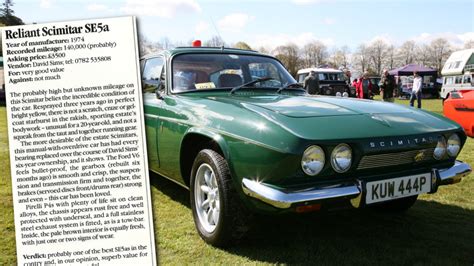
Classic car values are experiencing a cooling trend, presenting potential opportunities for enthusiasts to acquire coveted models at more accessible prices. After a period of soaring valuations fueled by pandemic-era stimulus and shifting investment strategies, the classic car market is showing signs of normalization, with some segments seeing notable price declines.
The recent market dynamics suggest a recalibration after a period of unsustainable growth. “Classic cars were hot. Now, not so much,” a recent analysis from Yahoo Finance stated, highlighting the shift. While not every segment is uniformly affected, certain categories, particularly those that saw the most dramatic increases, are now undergoing corrections. This price adjustment is attributed to factors such as rising interest rates, economic uncertainty, and a shift in collector preferences. High inflation and increased interest rates have decreased discretionary spending, impacting investment in passion assets like classic cars. The change creates opportunities for buyers who were previously priced out of the market, while sellers may need to adjust their expectations.
Market Overview: Recent Trends and Contributing Factors
The classic car market surged during the COVID-19 pandemic, driven by factors such as increased disposable income, limited travel options, and a desire for tangible assets. Stimulus checks and low interest rates fueled investment in alternative assets, including classic automobiles. This led to significant appreciation in the values of many models, creating a seller’s market where demand far outstripped supply. However, as the global economy began to recover and interest rates started to rise, the classic car market began to cool. The increased cost of borrowing money made it more expensive to finance classic car purchases, while economic uncertainty dampened investor sentiment. High inflation rates also reduced disposable income, impacting the ability of potential buyers to invest in luxury items. The “wealth effect,” where rising asset prices encourage spending and investment, reversed as inflation rose and many stocks and bonds declined in value. This reversal impacted the classic car market.
“The market ran up so far, so fast, that we’re seeing a healthy, necessary correction,” said Jonathan Klinger, a spokesperson for Hagerty, a company specializing in classic car insurance and valuation. This correction is not necessarily a sign of a market crash, but rather a return to more sustainable levels of valuation. The current environment allows buyers to exercise more bargaining power and potentially acquire cars at more reasonable prices.
Specific Segments Affected
While the overall market is experiencing a slowdown, certain segments are more affected than others. Cars that saw the most significant price increases during the pandemic boom are now experiencing the steepest declines. Examples include certain vintage sports cars, muscle cars, and luxury vehicles from the 1960s and 1970s. These segments were particularly popular among speculators and investors looking to capitalize on short-term price appreciation. As the market cools, these investors are now looking to offload their assets, leading to increased supply and downward pressure on prices. Collector cars of the 1980s and 1990s are also facing headwinds. The increased supply of these cars as owners age and downsize their collections contributes to the market softening.
However, not all segments are experiencing declines. Rare and historically significant cars continue to hold their value or even appreciate. These include vehicles with documented provenance, limited production numbers, or significant racing history. These cars are typically sought after by serious collectors who are less sensitive to short-term market fluctuations. In other words, condition, rarity, and history continue to drive demand and sustain prices in specific segments.
Expert Opinions and Analysis
Industry experts agree that the classic car market is undergoing a period of adjustment. Hagerty’s market indices, which track the values of various classic car segments, show a decline in overall market activity. However, they also emphasize that the market remains healthy and that there are still opportunities for both buyers and sellers. “The market is behaving like a normal market again,” Klinger stated. “We’re seeing more realistic valuations and a return to more rational pricing.”
Other experts note that the classic car market is not monolithic. Different segments are influenced by different factors, and some models continue to outperform the market. They advise potential buyers to do their research and focus on cars that they are passionate about, rather than simply trying to make a quick profit. “Buy what you love, and the investment will take care of itself,” is a common refrain among classic car enthusiasts.
Tips for Potential Buyers
For those considering entering the classic car market, now may be an opportune time. However, it is crucial to approach the market with caution and do your homework. Here are some tips for potential buyers:
- Do Your Research: Before making any purchase, research the specific model you are interested in. Understand its history, production numbers, and market trends. Consult with experts and review valuation guides to get an accurate assessment of its worth.
- Inspect Thoroughly: Always inspect the car in person or have it inspected by a qualified mechanic. Look for signs of rust, damage, or previous repairs. Check the car’s documentation to ensure its authenticity and provenance.
- Negotiate Wisely: Don’t be afraid to negotiate the price. The current market favors buyers, so you may be able to get a better deal than you would have a year ago. Be prepared to walk away if the seller is unwilling to meet your offer.
- Consider Long-Term Value: Focus on cars that are likely to hold their value or appreciate over time. These include rare, well-documented, and historically significant models.
- Buy What You Love: Ultimately, the best classic car to buy is one that you are passionate about. Even if the market fluctuates, you will still enjoy owning and driving a car that you love.
Impact of Interest Rates and Inflation
The rise in interest rates and inflation has had a significant impact on the classic car market. Higher interest rates make it more expensive to finance classic car purchases, reducing demand. Inflation erodes disposable income, making it more difficult for potential buyers to afford luxury items. These factors have contributed to the cooling of the market and the decline in prices.
The Federal Reserve’s monetary policy plays a crucial role in shaping the economic environment. As the Fed raises interest rates to combat inflation, it impacts borrowing costs across the board. This affects not only classic car buyers but also dealers and auction houses, who may find it more difficult to finance their operations.
The Role of Auctions
Auctions are an important indicator of market trends in the classic car world. Major auction houses, such as RM Sotheby’s, Bonhams, and Gooding & Company, hold regular sales that attract collectors and investors from around the globe. The results of these auctions provide valuable insights into the current state of the market.
Recent auction results suggest a softening in demand and a decline in prices for some models. Cars that previously sold for record prices are now fetching lower bids, indicating a shift in market sentiment. However, top-tier cars with exceptional provenance and condition continue to command high prices.
Future Outlook
The future of the classic car market is uncertain. While the current cooling trend may continue in the short term, the long-term outlook remains positive. Classic cars are tangible assets that offer a unique combination of beauty, history, and investment potential. As long as there are enthusiasts who appreciate these qualities, the market will continue to thrive.
However, the market is likely to be more volatile in the years ahead. Economic factors, such as interest rates, inflation, and geopolitical events, will continue to influence demand and prices. Collectors and investors need to be prepared for these fluctuations and manage their portfolios accordingly.
Demographic Shifts and Their Influence
Changes in demographics also play a role in shaping the classic car market. As older collectors age and downsize their collections, more cars become available on the market. At the same time, younger generations are entering the market with different tastes and preferences. These shifts can impact the demand for specific models and influence overall market trends.
For example, there is growing interest in classic Japanese cars and cars from the 1980s and 1990s among younger collectors. These cars are often more affordable and accessible than older, more established classics. As these collectors gain wealth and influence, they are likely to drive demand for these segments of the market.
The Importance of Condition and Provenance
In the classic car world, condition and provenance are paramount. Cars that are in excellent condition and have a well-documented history are always more valuable than those that are not. Buyers are willing to pay a premium for cars that have been properly maintained and restored, and that have a clear chain of ownership.
Provenance refers to the car’s history, including its original owner, racing history, and any significant events in its past. Cars with documented provenance are highly sought after by collectors, as they offer a tangible connection to the past.
The Enduring Appeal of Classic Cars
Despite the current market fluctuations, the enduring appeal of classic cars remains strong. These cars represent a bygone era of automotive design and engineering. They offer a unique driving experience that cannot be replicated by modern vehicles. Classic cars are also a form of art, reflecting the creativity and craftsmanship of their designers and builders.
For many enthusiasts, owning a classic car is a passion project. They enjoy the process of restoring, maintaining, and driving these vehicles. Classic cars are also a source of community, bringing together enthusiasts from all walks of life.
Conclusion
The classic car market is currently undergoing a correction after a period of rapid growth. While this may present challenges for some sellers, it also creates opportunities for buyers who are looking to acquire their dream cars at more reasonable prices. By doing their research, inspecting cars thoroughly, and negotiating wisely, potential buyers can navigate the market successfully and find the classic car of their dreams. The market’s readjustment provides an opportunity for informed enthusiasts to enter or expand their collections. Remember, knowledge and passion are key to navigating this dynamic market.
Five Frequently Asked Questions (FAQs)
1. Why are classic car prices declining?
Several factors contribute to the decline in classic car prices. The most significant include rising interest rates, which make financing more expensive; high inflation, which reduces disposable income for luxury purchases; and a market correction after a period of unsustainable growth during the pandemic. Furthermore, some investors are selling off assets to realize gains, increasing supply and putting downward pressure on prices. Also, changing tastes and preferences among collectors may also impact the values of particular models.
2. Which types of classic cars are most affected by the price dip?
The cars that experienced the most significant price increases during the pandemic boom are now experiencing the steepest declines. This includes certain vintage sports cars, muscle cars, and luxury vehicles from the 1960s and 1970s. Additionally, collector cars from the 1980s and 1990s are also facing headwinds due to increased supply as owners age and downsize their collections.
3. Is now a good time to buy a classic car?
For those who have been priced out of the market, the current cooling trend presents a potential buying opportunity. It’s a good time to consider purchasing, provided you do thorough research, inspect the car carefully, and negotiate wisely. Given the current market conditions, buyers now have more bargaining power.
4. How do I determine the fair market value of a classic car I’m interested in buying?
To determine the fair market value, conduct thorough research using multiple sources. Start by consulting valuation guides from reputable sources like Hagerty or NADAguides. Analyze recent auction results from major auction houses like RM Sotheby’s and Bonhams to see what similar cars have sold for. Speak with experts, such as classic car appraisers or mechanics specializing in the model you’re interested in. Also, consider the car’s condition, provenance, and any unique features that could affect its value.
5. What factors should I consider before buying a classic car?
Before buying a classic car, consider the following factors: Your budget, including purchase price, maintenance, and insurance; the car’s condition, including rust, damage, and previous repairs; its provenance, including its history and originality; your mechanical skills and willingness to perform maintenance; and the availability of parts and service for the specific model. Most importantly, consider whether the car is something you are genuinely passionate about.









